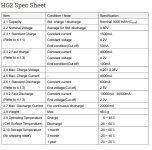Hey all,
Planning on building a battery pack for trolling motor, I will be using LG hg2 chem.
Battery model: LG HG2
Build: 7S15P or 3*7s5p
I would like to break the pack to 3 small packs to allow for fast charging, I would rather have a 3 charger to charge 7s5P instead of charging 7s15P it will take forever 45amp
Thinking of having 3 BMS for each pack separately and then connect the packs in parallel.
Would this be double without separating the pack every time I need to charge the 3 packs, my question can I attach the 3*7s5p together and have a break point in between when I charge them?
Is what Im thinking is crazy? Or double.
Sorry I’m not that guru but been building small packs of 3s for fish finder, and they work like a charm.
Many thanks
Planning on building a battery pack for trolling motor, I will be using LG hg2 chem.
Battery model: LG HG2
Build: 7S15P or 3*7s5p
I would like to break the pack to 3 small packs to allow for fast charging, I would rather have a 3 charger to charge 7s5P instead of charging 7s15P it will take forever 45amp
Thinking of having 3 BMS for each pack separately and then connect the packs in parallel.
Would this be double without separating the pack every time I need to charge the 3 packs, my question can I attach the 3*7s5p together and have a break point in between when I charge them?
Is what Im thinking is crazy? Or double.
Sorry I’m not that guru but been building small packs of 3s for fish finder, and they work like a charm.
Many thanks


